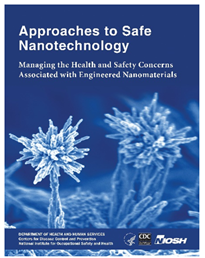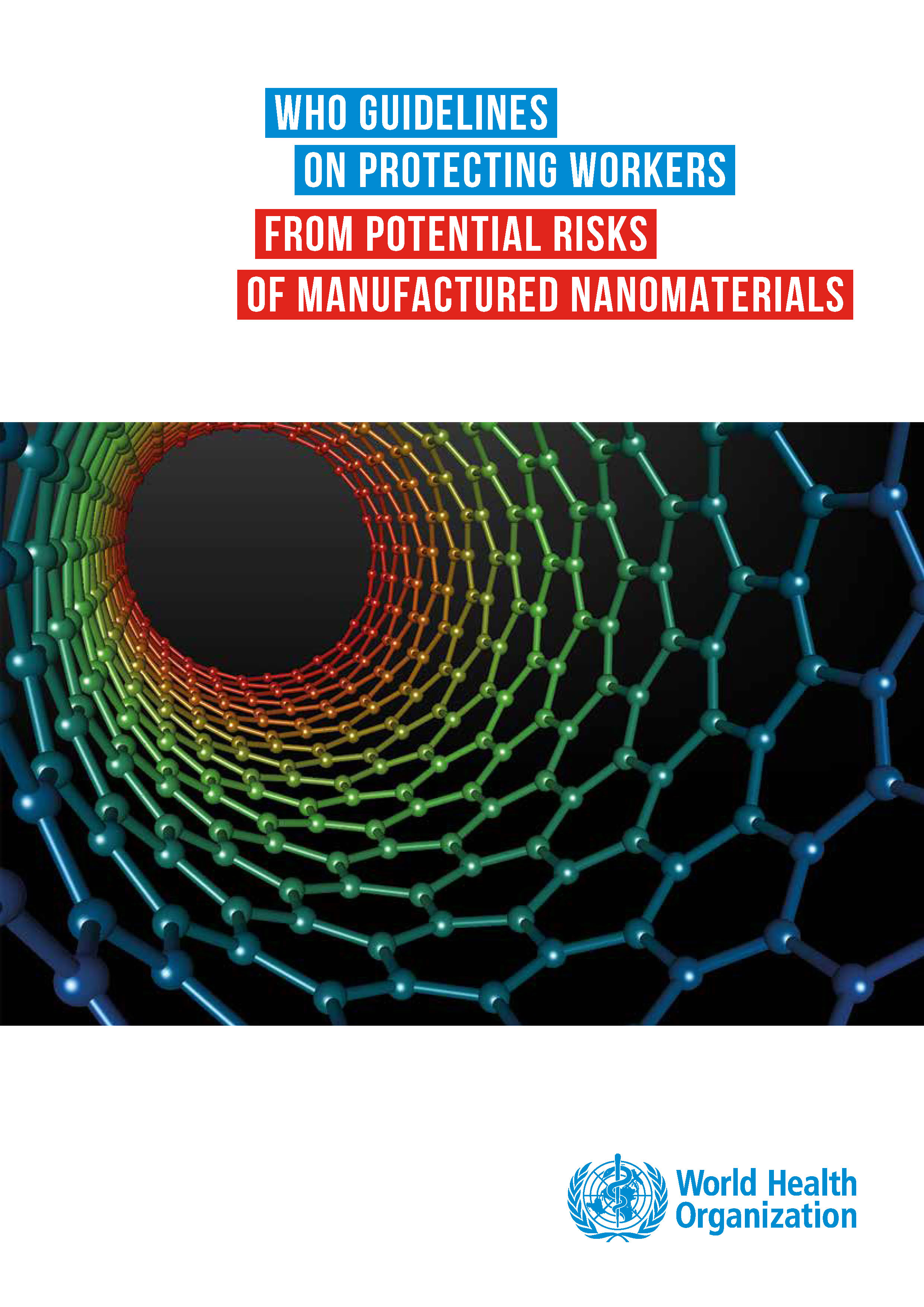NIOSH Global Collaborations on Workplace Safety of Nanomaterials
Posted on by
The National Institute for Occupational Safety and Health (NIOSH) Nanotechnology Research Center (NTRC) has taken on a global leadership role on research and guidance for nanomaterials in the workplace since the formation of NTRC in 2004 [1]. Global Collaborations is one of the ten critical topic areas for nanotechnology research and communication identified by NTRC [2]. The NIOSH global collaboration efforts build on the strong NIOSH NTRC research and guidance efforts contributing to the global technical information and guidance about protecting workers and aim to facilitate international collaborations for research and for development and dissemination of guidance and training to protect workers not only nationally, but also worldwide from the potential risks of manufactured nanomaterials.
The NIOSH NTRC has successfully engaged with a number of international entities at all levels — bilateral with sister organizations in other countries as well as multilateral with regional and global organizations. At the bilateral level, the NIOSH NTRC has been communicating and collaborating with the United Kingdom Institute of Occupational Medicine and the Health and Safety Laboratory; the Netherlands Organization for Applied Scientific Research; the French Agency for Food, Environmental and Occupational Health and Safety; the Finnish Institute of Occupational Health; and the Australian Safety and Compensation Council (Safe Work Australia) [3].
At the multilateral level, NIOSH has been collaborating with major international government-level organizations such as the Organization for Economic Cooperation and Development (OECD), the United Nations (UN) World Health Organization, the UN International Labour Organization and the UN Institute for Training and Research (UNITAR) to build cooperation, coordination, and communication among governments around the world. NIOSH has been also working with international nongovernmental organizations such as the International Commission on Occupational Health and the International Council on Nanotechnology on global projects of information dissemination and communication.
NIOSH scientists have actively participated in all major international standards setting organizations developing standards for nanotechnology safety including the ASTM International E56 Committee on Nanotechnology and the International Organization for Standardization (ISO) Technical Committee (TC) 229 Nanotechnologies.
Major global milestones and success indicators of the NTRC include:
November 2005: NIOSH participated in the inaugural meeting of ISO TC 229 Nanotechnologies. NIOSH has continued active participation and has been taking on increasingly higher-level leadership roles in TC 229.
October 2006: NIOSH joined the inaugural meeting of the OECD Working Party on Manufactured Nanomaterials. Since that meeting, NIOSH has served as the chair of the Steering Group on exposure, which has developed and published 18 (as of 01-11-24) reports on occupational, consumer and environmental exposures to nanomaterials [4].
 October 2008: The International Organization for Standardization published the first document on the safety of nanomaterials, Technical Report (TR) 12885, Health and Safety Practices in Occupational Settings Relevant to Nanotechnologies. This report, developed under the leadership of NIOSH, was based on the NIOSH Approaches to Safe Nanotechnology.
October 2008: The International Organization for Standardization published the first document on the safety of nanomaterials, Technical Report (TR) 12885, Health and Safety Practices in Occupational Settings Relevant to Nanotechnologies. This report, developed under the leadership of NIOSH, was based on the NIOSH Approaches to Safe Nanotechnology.
April 2010: NIOSH signed an agreement with UNITAR on the critical importance of the world of work in defining sound occupational safety and health prevention policies and interventions in the workplace and implementing strategies for expanding protection to workers and their communities. Through this agreement, NIOSH has assisted with developing and conducting UNITAR training on nanotechnology safety for government officials around the world.
 October 2010: The World Health Organization approved the development of guidelines on worker safety in nanotechnology workplaces under the leadership of NIOSH. The guidelines were published in December 2017 [5].
October 2010: The World Health Organization approved the development of guidelines on worker safety in nanotechnology workplaces under the leadership of NIOSH. The guidelines were published in December 2017 [5].
September 2014: ISO selected NIOSH to lead an international working group on the health, safety, and environmental aspects of nanotechnologies. The working group is part of a larger initiative by ISO to develop standardization in the nanotechnologies field.
October 2014: The International Agency for Research on Cancer (IARC) working group met to evaluate carcinogenicity of carbon nanotubes, fluoro-edinite, and silicon carbide. NIOSH research [6] was integral in the IARC decision to classify MWCNT-7 as a group 2b carcinogen.
November 2016: ISO published technical report TR 18637, Overview of Available Frameworks for the Development of Occupational Exposure Limits and Bands for Nano-Objects and their Aggregates and Agglomerates (NOAAs), which was developed under the leadership of NIOSH.
June 2020: American National Standards Institute selected NIOSH to chair the U.S. Technical Advisory Group for ISO TC 229.
As NIOSH NTRC enters its third decade of ensuring the safety of nanomaterials in the workplace, we will continue expanding our global leadership of occupational safety and health research and guidance for nanomaterials. Experience gained with nanomaterials will be applied to other emerging workplace hazards such as nanoplastics [7] and advanced materials [8].
Vladimir Murashov, Ph.D. is a Senior Scientist in the NIOSH Office of the Director and a Coordinator of the Global Collaborations critical topic area in NIOSH NTRC
This blog is part of a series to commemorate the 20th anniversary of the Nanotechnology Research Center. Click here for additional blogs in the series and on other nanotechnology topics.
References
- Vietas J, Chen L [2024]. Looking to the Past and the Future of NIOSH Nanotechnology Guidance. NIOSH Science Blog, Jan 3, https://blogs.cdc.gov/niosh-science-blog/2024/01/03/nano-20-guidance/
- 10 Critical Nanotechnology Topic Areas. Cincinnati, OH: U.S. Department of Health and Human Services, Centers for Disease Control and Prevention, National Institute for Occupational Safety and Health, https://www.cdc.gov/niosh/topics/nanotech/critical.html
- NIOSH [2019]. Continuing to protect the nanotechnology workforce: NIOSH nanotechnology research plan for 2018–2025. By Hodson L, Geraci C, Schulte P. Cincinnati, OH: U.S. Department of Health and Human Services, Centers for Disease Control and Prevention, National Institute for Occupational Safety and Health, DHHS (NIOSH) Publication 2019-116, https://doi.org/10.26616/NIOSHPUB2019116
- Murashov VV, Engel S, Savolainen K, Fullam B, Lee M, Kearns P [2009]. Occupational Safety and Health in Nanotechnology and Organisation for Economic Co-operation and Development. J Nanopart Res. 11(7) 1587:1591; doi: 10.1007/s11051-009-9637-7.
- Howard J, Murashov V [2017]. WHO Guidelines to Protect Workers from Nanomaterials. NIOSH Science Blog. https://blogs.cdc.gov/niosh-science-blog/2017/12/15/who-nano/.
- Sargent LM, Porter DW, Staska LM, Hubbs AF, Lowry DT, Battelli L, Siegrist KJ, Kashon ML, Mercer RR, Bauer AK, Chen BT, Salisbury JL, Frazer D, McKinney W, Andrew M, Tsuruoka S, Endo M, Fluharty KL, Castranova V, Reynolds SH [2014]. Promotion of lung adenocarcinoma following inhalation exposure to multi-walled carbon nanotubes. Part Fibre Toxicol 11:3.
- Murashov V, Geraci CL, Schulte P, Howard J [2020]. Are There Nano- and Microplastics in the Workplace. NIOSH Science Blog. https://blogs.cdc.gov/niosh-science-blog/2020/02/19/microplastics/.
- Murashov V, Schulte P, Howard J [2012]. Safe Handling of Advanced Nanomaterials. NIOSH Science Blog. https://blogs.cdc.gov/niosh-science-blog/2012/07/handling-nano/.
Posted on by

